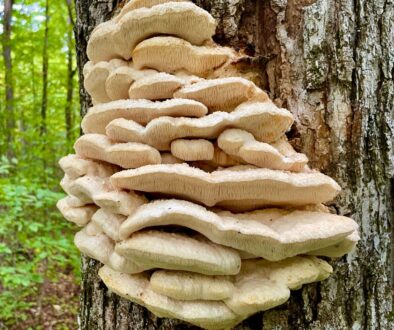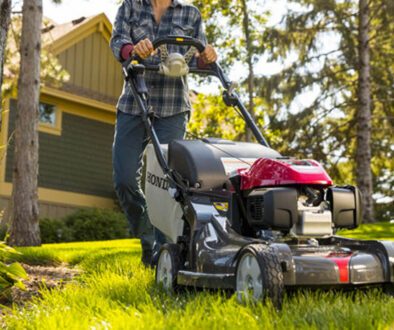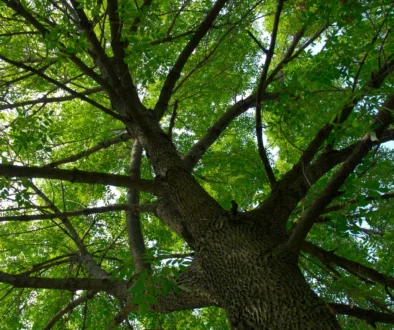Trees and Turf
Trees and Turf
Tree and Turf selection, competition among plants, maintenance practices, and special situations must all be considered when trees and turf share a landscape. Trees and Turf Woody plants and turfgrasses (uniform, long-lived ground cover) are critical design elements in urban and suburban landscapes. Trees and turf offer distinct personal, functional, and environmental benefits. The intended benefits of these plants may never be obtained if potential incompatibilities are not addressed.
Conflicts
Undesirable effects of tree and turfgrass conflicts include:
• Thinning grass under large shade trees where turf cannot get enough sunlight or water.
• Large tree roots that hinder mowing and conflict with healthy turf maintenance.
• Trees badly damaged by lawn mowers or string trimmers when turf is too close to tree trunks.
• Young trees that don’t seem to grow due to turf out-competing the tree for resources.
Benefits
Turfgrasses may provide some of the same environmental
benefits as trees, such as:
• Taking carbon dioxide and producing oxygen via photosynthesis.
• Cooling the air by changing water into water vapor.
• Filtering dust and particulates; entrapping air-polluting gases; and reducing erosion and runoff.
Selection
When trees and turf are used in the same area, extra attention must be given to plant material selection to ensure tree and lawn compatibility. Grass is generally a sun-loving plant. Most species will not grow well in areas that get less than 50% open sunlight. However, new shade-tolerant grass varieties are being introduced into the market. In areas where the lawn is the primary design feature, select woody plants that are small, have open canopies (to allow sunlight to penetrate to the ground), or have a high canopy. Select trees that do not root near the soil surface. Surface rooting is most prevalent where shallow topsoil or clay soils are present.
Competition
All plants require sunlight, water, and rooting space for growth. In the landscape, plants compete with their neighbors for these resources. Some plants even release chemicals in the soil to restrict growth of nearby plants. A landscape design should provide adequate space for plants (keeping size at maturity in mind) to minimize competition. While shading is the most obvious form of competition, roots also compete below ground for water, nutrients, and space. The majority of fine, water-absorbing tree and grass roots are in the top 6 inches (15 cm) of soil. In this region, grass roots ordinarily occupy a much greater percentage
of the soil volume than tree roots and absorb more of the available water and nutrients (especially around young trees). However, grass root density is often much lower in areas where trees were established first. In these situations, shading and other factors help tree roots more competitive. Competition is especially important when transplanting, seeding, or sodding. The newest plant in the area must be given special treatment to become established. Competing sod should be removed from around transplanted trees and shrubs. Water should be applied to new transplants and seedlings as needed. Mulching is the best alternative to turf around trees. A 2–4 inch (5–10 cm) layer of wood chips, bark, or other organic material over the soil beneath the tree’s drip line is recommended because it:
• Helps retain soil moisture.
• Helps reduce weeds and grass competition.
• Increases soil biology and fertility as it decomposes.
• Protects the trunk from serious injuries caused by lawn
care equipment.
• Improves soil structure (better aeration, temperature,
and moisture conditions).
Remember to leave a few inches of mulch-free area at the base of the tree to reduce moist bark and prevent decay.
Maintenance Practices
Trees and turf have different requirements. Given the close proximity of tree and turf roots, treatment of one plant may
damage the other. Herbicides used in lawn care may cause severe damage to trees when misapplied. Herbicide drift on windy days and vaporization on hot days can cause damage to non-target woody plants. While most herbicides do not kill tree roots,
some, such as soil sterilants, do. Check herbicide labels for a product’s potential to harm trees. Fertilizer applied to one plant
will also be absorbed by the roots of a nearby plant. This can be a good thing, but excessive fertilization of either trees
or turf can result in excessive aboveground growth or reduced disease and pest resistance. Lawn watering is beneficial to
trees if done correctly. Trees need, on average, the equivalent of 1 inch (2.5 cm) of rain every 7–10 days, depending on the
species. Water prior to sunrise or after sunset, if possible. Frequent, shallow watering does not meet the needs of either trees or turf, and can be harmful to both. Allow turf to grow to the top of its recommended mowing height to increase health and rooting depth and decrease irrigation, fertilization, and weed control requirements. Mowing no more than one-third of the grass blade’s height and letting the clippings remain on the lawn promotes a healthy and vigorous lawn. Encourage communication between tree and lawn care professionals to prevent duplication of maintenance activities.
Contact a Proffesional
If you have any inquiries regarding your landscape, feel free to reach out to Johnson Ops Tree Care. Our Certified Arborist will be happy to meet with you and provide the answers you need.




